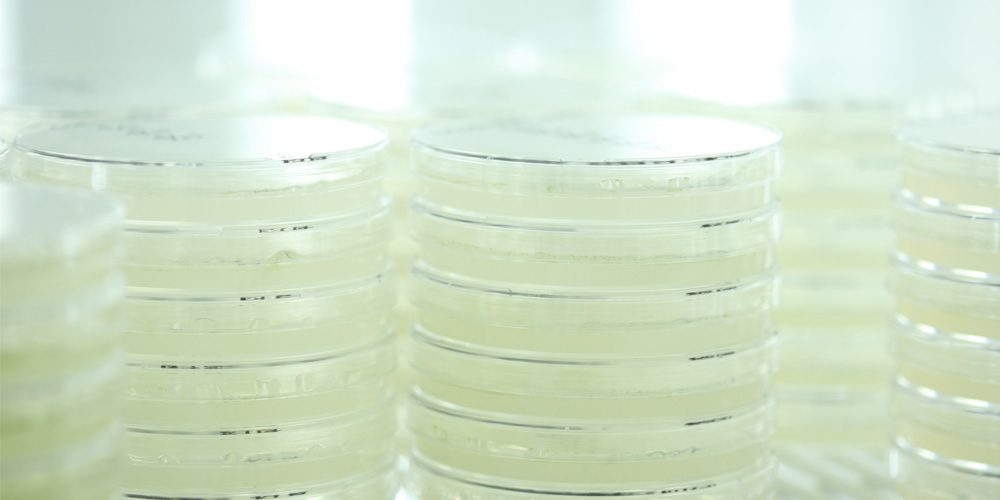
基礎生物学研究所




2002.11.11
● The Plant Cell
発刊日及びナンバー: 2002年11月 14(11)
論文タイトル:A Two-Component Mn2+-Sensing System Negatively Regulates Expression of the mntCAB Operon in Synechocystis
論文著者:Katsushi Yamaguchi. Iwane Suzuki. Hiroshi Yamamoto. Alexander Lyukevich. Irina Bodrova. Dmitry A. Los. Irina Piven. Vladislav Zinchenko. Minoru Kanehisa. and Norio Murata
Abstract:
Mn is an essential component of the oxygen-evolving machinery of photosynthesis and is an essential cofactor of several important enzymes. such as Mn-superoxide dismutase and Mn-catalase. The availability of Mn in the environment varies. and little is known about the mechanisms for maintaining cytoplasmic Mn2+ ion homeostasis. Using a DNA microarray. we screened knockout libraries of His kinases and response regulators of Synechocystis sp PCC 6803 to identify possible participants in this process. We identified a His kinase. ManS. which might sense the extracellular concentration of Mn2+ ions. and a response regulator. ManR. which might regulate the expression of the mntCAB operon for the ABC-type transporter of Mn2+ ions. Furthermore. analysis with the DNA microarray and by reverse transcription PCR suggested that ManS produces a signal that activates ManR. which represses the expression of the mntCAB operon. At low concentrations of Mn2+ ions. ManS does not generate a signal. with resulting inactivation of ManR and subsequent expression of the mntCAB operon.
● Plant Physiology
発刊日及びナンバー: 2002年11月 130(3)
論文タイトル:Salt Stress Inhibits the Repair of Photodamaged Photosystem II by Suppressing the Transcription and Translation of psbA Genes in Synechocystis
論文著者:Suleyman I. Allakhverdiev. Yoshitaka Nishiyama. Sachio Miyairi. Hiroshi Yamamoto. Noritoshi Inagaki. Yu Kanesaki. and Norio Murata
Abstract:
Light stress and salt stress are major environmental factors that limit the efficiency of photosynthesis. However. we have found that the effects of light and salt stress on photosystem II (PSII) in the cyanobacterium Synechocystis sp. PCC 6803 are completely different. Strong light induced photodamage to PSII. whereas salt stress inhibited the repair of the photodamaged PSII and did not accelerate damage to PSII directly. The combination of light and salt stress appeared to inactivate PSII very rapidly as a consequence of their synergistic effects. Radioactive labeling of cells revealed that salt stress inhibited the synthesis of proteins de novo and. in particular. the synthesis of the D1 protein. Northern- and western-blotting analyses demonstrated that salt stress inhibited the transcription and the translation of psbA genes. which encode D1 protein. DNA microarray analysis indicated that the light-induced expression of various genes was suppressed by salt stress. Thus. our results suggest that salt stress inhibits the repair of PSII via suppression of the activities of the transcriptional and translational machinery.
● Molecular Microbiology
発刊日及びナンバー: 2002年11月 46(4)
論文タイトル:The histidine kinase Hik33 perceives osmotic stress and cold stress in Synechocystis sp. PCC 6803
論文著者:Koji Mikami. Yu Kanesaki. Iwane Suzuki and Norio Murata
Abstract:
The stress imposed on living organisms by hyperosmotic conditions and low temperature appears to be perceived via changes in the physical state of membrane lipids. We compared genome-wide patterns of transcription between wild-type Synechocystis sp. PCC 6803 and cells with a mutation in the histidine kinase Hik33 using a DNA microarray. Our results indicated that Hik33 regulated the expression of both osmostress-inducible and cold-inducible genes. The respective genes that were regulated by Hik33 under hyperosmotic and low-temperature conditions were. for the most part. different from one another. However. Hik33 also regulated the expression of a set of genes whose expression was induced both by osmotic stress and by cold stress. These results indicate that Hik33 is involved in responses to osmotic stress and low-temperature stress but that the mechanisms of the responses differ.